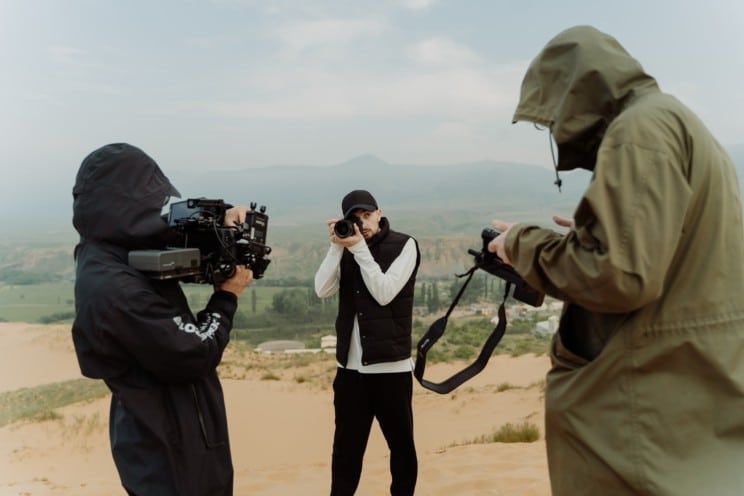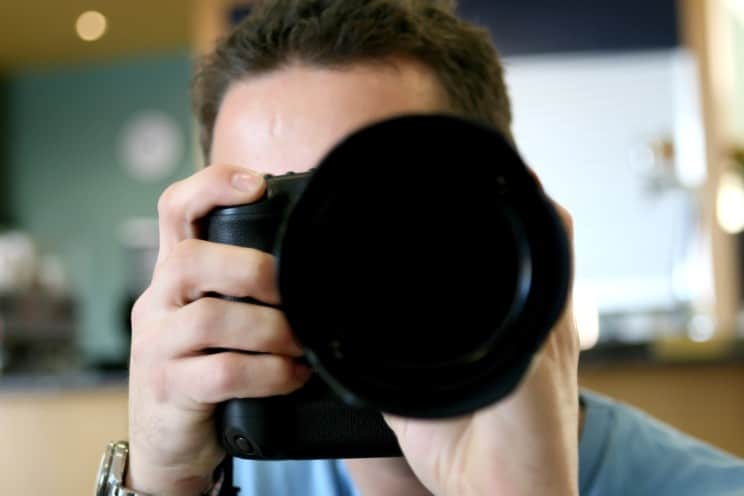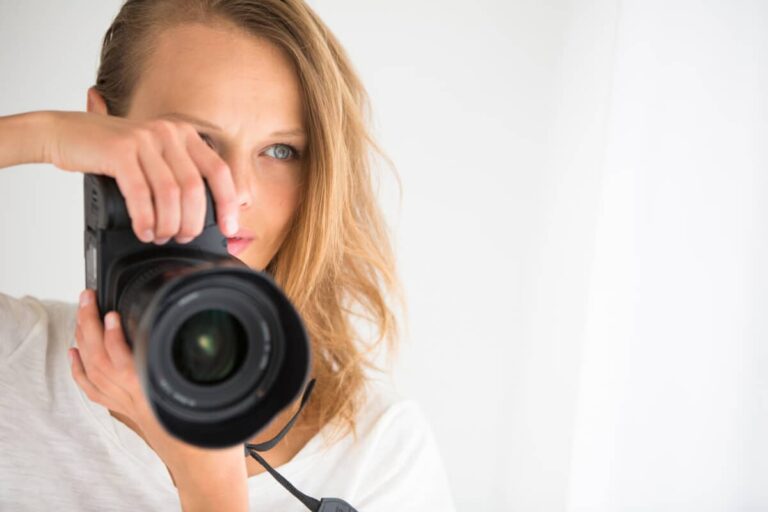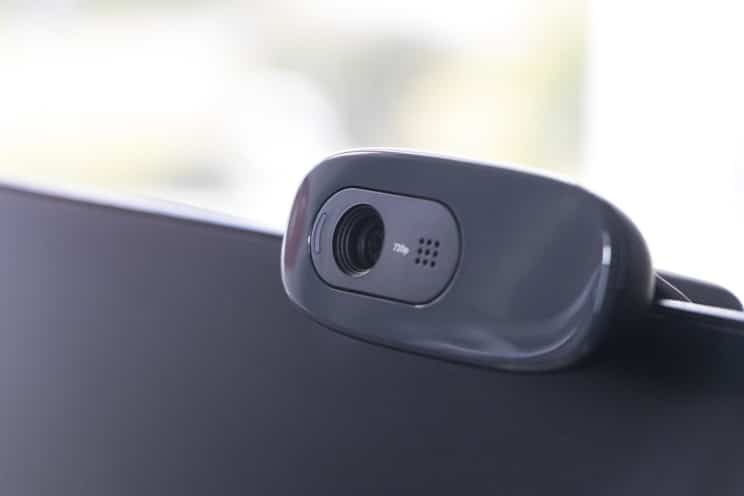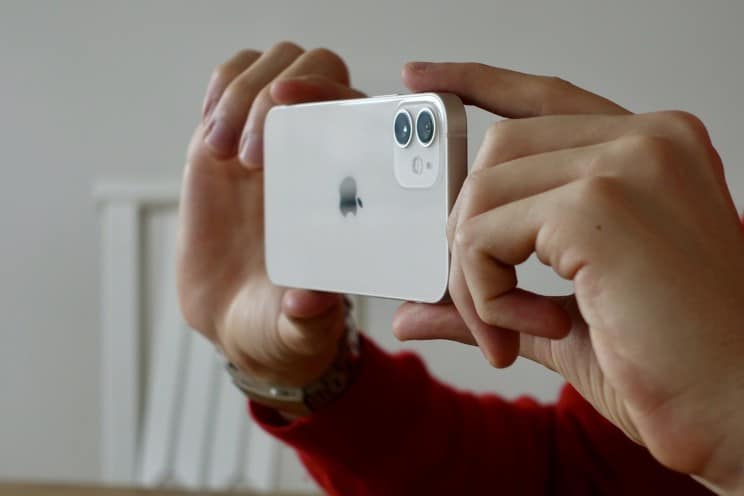5 of the Best Cameras For Pet Photography – Purrfect Pet Portraits!
In this article, we’ll explore our staff picks for the 5 best cameras for pet photography.
We shall also provide a buying guide and expert pet photography tips to help you get ‘purrfect’ results with any camera at your disposal.
Lastly, we’ll address the most common pet photography questions in the FAQs section.
Capturing stunning high-quality photos and videos of animals can be challenging even for experienced photographers.
That’s because the critters don’t always feel like posing for the camera – far from it.
Luckily, some cameras have special features to help us produce excellent shots of our beloved pets.
Let’s jump straight in.
Best Cameras for Pet Photography: The Overpowered
1. Sony Alpha 7R III Full Frame Mirrorless Camera
Highlights of the Sony A7R III
- 42 MP Resolution
- Animal Eye AF
- 5.5 stops IBS
- Dual card slots
- Great video capabilities
Features
The Sony Alpha A7R iii possesses some useful tricks that any pet and even wildlife photographer would appreciate.
There is a 10 fps burst mode that captures just the right perfect moment, and with the new, improved eye AF, you are sure to get tack-sharp focus every time.
Design
The sleek magnesium chassis of the a7 R iii is similar to its siblings from the a7 family.
However, minor layout tweaks make choosing an AF point easier than previously.
While the menu system is dense, it is well laid out.
The record button has also been slightly moved and raised to eliminate the chance of accidental presses.
Performance
If you want to capture sharp photos of fast-moving subjects such as pets and even wildlife, the A7R iii can deliver in spades.
The camera offers excellent subject tracking and sublime autofocus abilities that will freeze any movement.
With the Animal Eye AF feature, it gets tack-sharp focus on the eye of the subject practically every time.
The Sony A7R is a beast at capturing video, too, providing 14-bit uncompressed footage.
We Like
- Improved battery life
- AF joystick and AF-on button
- LCD Touchscreen
- Low shutter lag
We Don’t Like
- No built-in flash
- Not the best dust and moisture sealing
- Lack of 4K/60p
- Limited selection of E-mount lenses
- Still quite pricey
Final Verdict on Sony A7R III for Pet Photography
If only the best is good enough, the Sony Alpha 7R iii is it.
While the camera does have a few imperfections, the overall package is insanely powerful and a potent tool for any kind of animal photo, including bird and wildlife photography.
If the budget is no issue, you can get crisp full-frame pet photos and uncompressed video footage, even at high ISO settings.
Best Cameras for Pet Photography: The Wickedly Fast
2. Sony Alpha 6600 E-Mount APSC Mirrorless Camera
Highlights of the Sony A6600 Camera
- Fast AF and excellent tracking
- Tilting high-res screen
- Battery life (810)
- 4K video capture
- IBIS
Features
Sony’s Alpha 6600 is their flagship crop sensor camera, and it undoubtfully deserves the second spot on our list.
Notably, it offers speedy autofocus and fantastic tracking of moving subjects – especially handy for beginner photographers.
These fundamental traits make the a6600 a dream for any cat or dog photographer, but that’s not all.
There is also 4K video and In-body image stabilization.
Design
Following the Sony alpha family’s footsteps, the a6600 has a similar lightweight metal chassis to the other models.
Furthermore, the camera can charge via USB, just like the rest of the lineup.
While there is a decent grip to latch on to, the camera’s overall handling can be somewhat cumbersome.
Performance
The performance area is where the a6600 truly shines. In particular, for the price.
The alpha 6600 mirrorless camera is rocking a 24 MP APS-C CMOS sensor that, combined with the IBIS, ensures good low-light performance.
Subject tracking is excellent, and the AF is quick and sticky like a tick on a hound.
We Like
- Great battery life
- Image stabilization
- Superb autofocus
- Weather sealing
We Don’t Like
- Severe rolling shutter
- Cramped feeling
- Only 1 card slot
- Dated design
Final Verdict on Sony A6600 for Pet Photography
Although the a6600 from Sony is relatively expensive, its zippy autofocus rivals that of an a7R iii.
All in all, the a6600 is a capable digital camera, whether you are a working photographer or just dabbling into dog photography.
However, it can feel somewhat cramped to operate, and the lack of a second card slot could be a turn-off for some.
Best Cameras for Pet Photography: The Sexy One
3. Fujifilm X-T30 Mirrorless Camera
Highlights of the Fujifilm X-T30 Camera
- 4K/30p video
- Reliable autofocus
- Looks and feels fantastic
- The best JPEGs in the game
Features
While the X-T30 from Fuji is not entirely up to par with its bigger brother, X-T3, it is a compelling option.
It’s significantly smaller, lighter, and cheaper, too.
The camera does carry over much of the X-T3’s power.
This includes the dedicated top dials for exposure compensation, drive, and shutter speed. We also get the lovely new Eterna simulation.
Design
According to our taste, the X-T30 checks all the right boxes in terms of aesthetics.
With that said, the ergonomics are frankly nothing to write home about.
Fortunately, there are extra grips and cages available from third-party manufacturers.
That aside, the camera is generally well laid out and a breeze to use without much menu-diving.
Performance
The X-T30 represents the best bang for the buck on this list.
Especially in the video department that provides 10-bit 4:2:2 over HDMI and 4K/30p for up to 10 minutes.
In terms of AF, you’ll be pleased to find that the Fuji XT30 has quick, tenacious autofocus that tracks faces well—just what we need as pet photographers.
Obviously, the X-T30 performs well in other photo genres, too.
We Like
- Impressive video out of the box
- Performance for the money
- The analog dials
- Gorgeous, timeless design
We Don’t Like
- 10-minute limit in 4K/30p
- 2.5mm mic input
- Ergonomics not great
- Lack of weather sealing
Final Verdict on Fujifilm X-T30 for Pet Photography
The Fujifilm X-T30 is an impressive, good-looking camera—both externally and in terms of imaging quality.
It’s more than adequate for most use cases, boasting much of the power of the bigger and pricier X-T3.
However, the tilting screen can’t get into selfie mode, which might scare off some vloggers.
Best Cameras For Pet Photography: The Action Lover
4. GoPro Hero 9 Black Action Camera
Highlights of the GoPro Hero 9 Camera
- Front display
- Improved battery life
- Programmable
- 5K footage
Features
An action camera can tell your pet’s story in an engaging and fun way – from the animal’s perspective.
Although, please beware and use it responsibly if you choose to.
Mounting a camera to your cat’s collar can represent a risk of injury by getting stuck.
Thanks to Hypersmooth 3.0, the footage comes out silky smooth. But we get other cool new features with the Hero 9.
For example, it can be programmed to capture the sunset while you sleep in.
It can also do the exact opposite and keep filming or time-lapsing until a preordained time.
Design
The form factor and layout are somewhat similar to the rest of the widely successful Hero line.
However, the device has gained a bit of bulk, along with a bigger and better battery.
Our favorite addition is the new front-facing screen, which makes vlogging a breeze.
The lens protector can now be replaced if scratched, and there are pseudo-interchangeable lenses available for added flexibility in composition.
Performance
The GoPro Hero 9 action camera has received several upgrades in the performance category, too.
For example, it can capture 5K footage – although, in practice, it’s only 30p and eats up a ton of storage space.
The 20 MP stills coming out of the Hero 9 are truly impressive, including the 14.7 MP frames grabbed while filming.
The wide angle means that virtually everything is in focus.
However, the small-ish sensor still means mediocre low-light performance.
We Like
- Dead-smooth footage
- Moddable and fixable
- Powerful as ever
- Can go anywhere
We Don’t Like
- Only 30p in 5K
- The screen can be unresponsive
- Not as good value as the Hero 8
Final Verdict on GoPro Hero 9 for Pet Photography
The Hero 9 is, at the moment of writing, the hottest cam in town for action photography.
Ever wondered how the world looks from your woofer’s point of view?
While it should be used with respect and caution, the camera can deliver smooth, unique, and fun footage from your pet’s perspective.
It can also work as a vlogging tool in a pinch, not to mention action scenes, time-lapses, sunrises, and sunsets.
Best Cameras for Pet Photography: The Tiny Monster
5. Sony Cyber-Shot DSC-RX100 IV Pocket Camera
Highlights of the Sony DSC-RX100 IV
- 1/32000 shutter speed
- Slow-motion video mode
- Dual recording capture
- Eye AF
- Tiny form factor
Features
The RX100 IV made it to this list thanks to its useful capabilities, such as ultra-fast electronic shutter speeds.
The camera also has a wealth of intelligent autofocus modes, including Eye AF.
This ensures sharp pin focus on your doggo’s eyes but is also great for portraits.
Like other Sony cameras, the ultra-compact RX100 IV charges via USB.
It also offers photo capture during video capture, which can happen at up to 100 Mbps with the right memory card.
Design
The fourth version of Sony’s legendary RX100 is precisely what you’d expect in terms of design.
The only visible difference from the older versions is the print on top.
The overall package is dense, well-built, and has a new, better EVF than the predecessor.
While this pocket rocket is not the world’s most convenient camera to handle, it means business when it comes to the sheer performance-to-size ratio.
Besides, it’s possible to get aftermarket grips that make it easier to grab onto.
Performance
For the lack of a better word, the RX100 iv offers hardcore performance considering its size.
Most impressive is the 1/32000 electronic shutter and the astonishing video capabilities that include S-log profiles to satisfy any lut-nut.
While the subject tracking is not perfect, it’s mostly adequate and can help you capture the best pet photos – whether you’re shooting JPEG, raw, or video.
The large Exmor RS sensor means that the rx100 Mark 4 fairs reasonably well in the dark, too.
We Like
- Fantastic performance
- Intelligent AF modes
- Versatile yet tiny
- Built-in ND-filter
We Don’t Like
- Shorter battery life than Mark III
- Handling can feel cramped
- The menu is not the most intuitive
- Expensive for a subcompact
Final Verdict on Sony RX100 IV for Pet Photography
As far as compact cameras go, the Sony RX100 Mark IV is hard to beat.
Thanks to the superb Zeiss optics and the large sensor, it can produce imaging quality that could match your regular DSLR camera.
Yet, it’s not optimal for users with large hands or for extended photo or video sessions – unless running off a power bank to grab that action shot.
In terms of pet photography, the rx100 m4 is a steady and reliable performer in a teeny-weeny package.
Buyers Guide: How to Pick the Best Camera for Pet Photography
Now we’ve had a look at some of the best cameras available for pet photographers.
But how to pick the right camera body and lens for you?
Here are the most crucial tips to keep in mind before buying.
The Best Focal Length for Capturing Pets and Wildlife
The most common pets, which are dogs and cats, are quite conscious of being photographed.
Although exceptions exist, many are not exactly fond of posing in front of the camera – just like many people aren’t.
The easiest way to make the whole process less intimidating is to use a large focal length.
You can get more distance between yourself and your subject by picking a camera with either a built-in zoom lens or an interchangeable lens system.
Be mindful of this feature when looking for a new camera. Some bundles come with a very decent kit lens in the 18-55mm range.
If wildlife photography is your game, 400mm and even higher will make your photographic mission more manageable.
Unless you’re in an environment where the animals have never encountered humans, they are likely to be avoiding our kind, and for a good reason.
That’s why a massive telephoto lens can help get up close while you’re hiding somewhere in the surroundings.
Why Camera Size Matters in Animal Photography
Pets are not stupid.
Most are well aware that something is going on and that your camera is involved.
Just as with human subjects, a small camera can play to your advantage by being inconspicuous and unthreatening.
For the same reason, busting out your favorite prime lens can work in your favor, at least in some situations.
If you have your pet since it’s tiny, you can accustom it to being photographed regularly.
Otherwise, the size of the camera can make or break a shoot.
If the session is not working out as intended, you can always fall back to the zoom lens strategy above.
The Best Camera Accessories for Photographing Pets
When you are looking to get fantastic photos or videos of your four-legged friend, remote shutter releases and tripods can come in handy.
That’s because then, the camera doesn’t immediately appear to be operated by you.
Instead, it’s parked somewhere and just stands there, looking like another random object.
Then, you could either let the camera silently capture time-lapses, video, or strategically timed stills.
Most cameras allow you to operate them via smartphone.
Sony devices, in particular, work super well in this regard.
Simply fire up the app and face a different direction while keeping a sharp eye on the display.
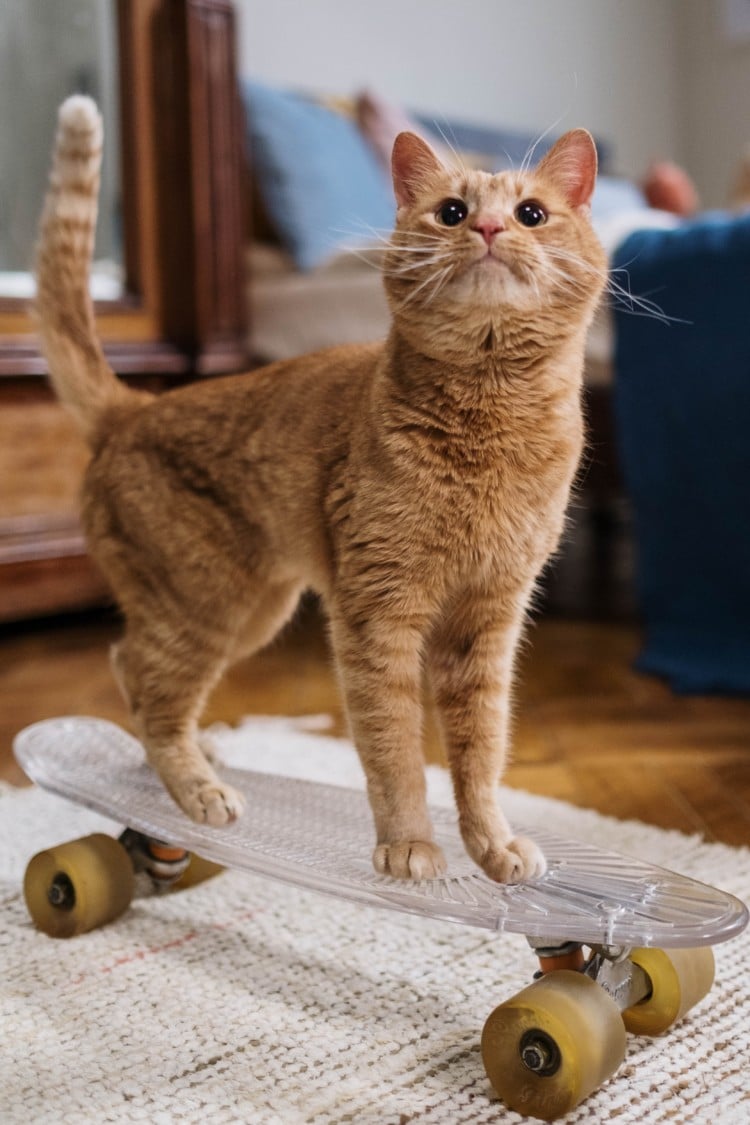
Final Thoughts
Even the best cameras for pet photography might not be enough in and on themselves.
With the advent of smartphones, everyone and their grandmother is now a photographer.
Even my young daughter has tried her hand at dog photography!
However, far from everybody can produce a gorgeous pet portrait consistently.
The reason being that the art of pet photography requires a combination of patience, skill, and the right gear to pull off at a high level.
It is great fun, though, and if you haven’t tried it yet, we highly recommend it.




